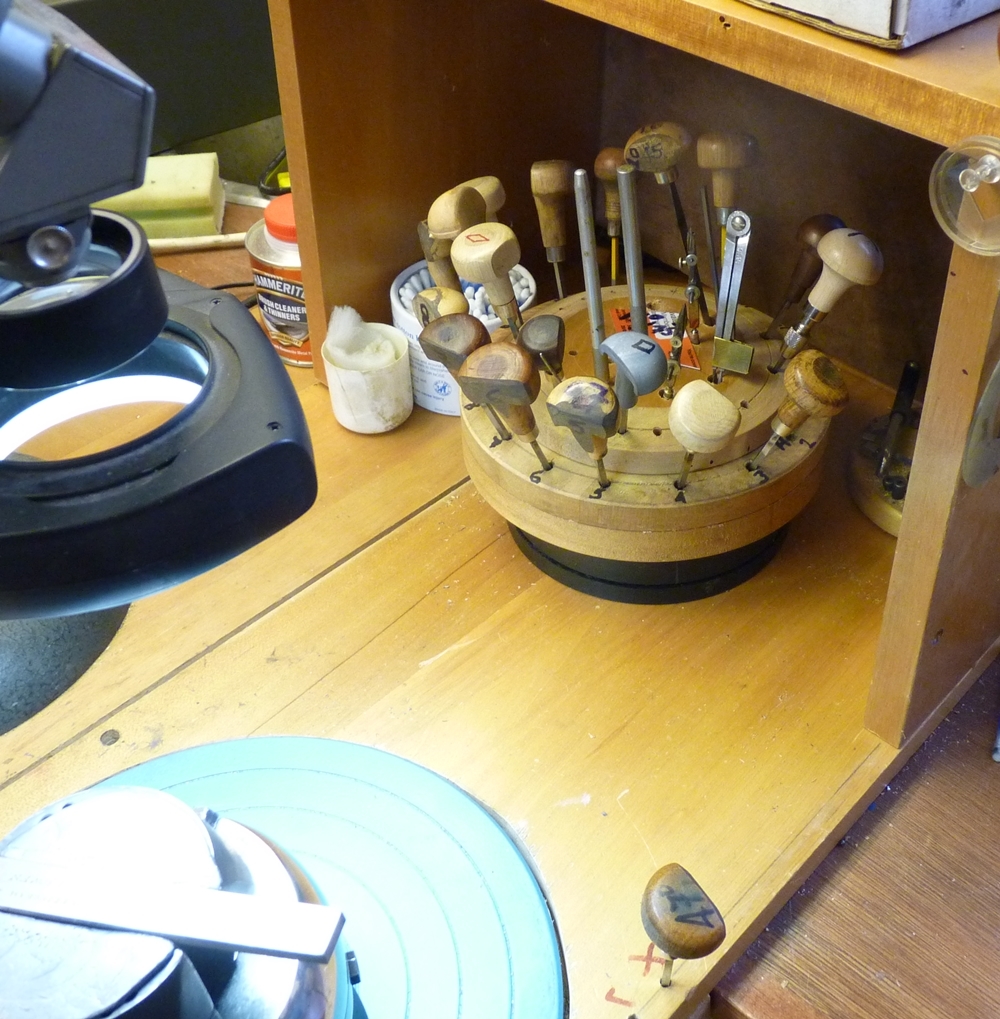I’ve just engraved the brass sideplate of a hefty early blunderbuss with rather nice stripy wood that my friend Dick was restoring for a client. The barrel has a classic ‘strawberry leaf’ motif on the breech, and the new sideplate needed to have a bit of life put into it. The original would probably been cast and quite 3D but the replacement is rather thin so I tried to get some 3D effect with the simple engraving – it remined me that I hate engraving brass more than anything else – I resorted to my Gravemaster in the end. The Gravemaster relies on resonance to work, so it depends on tuning the pressure and frequency (see below) so I can’t always get it to cut consistently, sometimes its too fierce and sometimes it hardly cuts at all – it is a frustrating tool, but it does have its uses and presumably I’ll get used to its foibles and learn to control it one day. (Added later…. I have sorted the Gravemaster now I hope, but uncovered a mystery – the pressure regulator on the compressor was blowing off above the set pressure and loosing air, so the compressor tended to run continuously which it wasn’t rated to do. I concluded that there was some kind of leak in the regulator and bought a new one. The new one worked as I thought it should and now acts as a pre-regulator that stabilises the Gravemaster and it seems to be fine. When I stripped the old regulator it seemed that it was meant to blow off and not regulate – more of a safety valve than a regulator – a mystery….
I didn’t do a particularly good job of getting rid of the Brasso!
Good quality mid to late 17th century engraving


